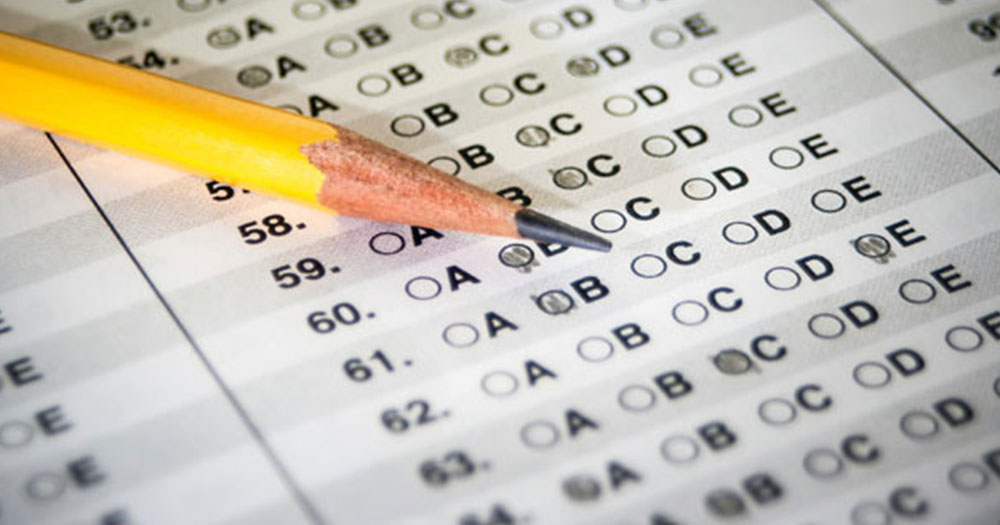Test-Taking Strategies
Have a test coming up? Struggle with test-anxiety? Here are some tips and tricks on how to reduce your test-anxiety


General Guidelines
- Gathering knowledge of the truth is the best preparation for tests.
- Hours of concentrated, effective study help to carefully place facts into your memory. This is the best way to prepare for any test.
- However, teachers often try to test your memory of the material by slightly altering it. In this case, practice and some test-taking skill will help.
- Always arrive early and take a moment to relax and reduce your anxiety.
- This brief time period will boost your confidence
- Use this time to focus your mind and think positive thoughts.
- Listen attentively to last minute instructions given by the instructor.
- Teachers often make last minute changes.
- Missing instructions can cause extreme anxiety.
- Read the test directions very carefully and watch for details.
- You may find that more than one answer may be possible on multiple choice tests.
- A key detail may require that you choose only three out of the five essay questions.
- Plan how you will use the allotted time.
- Estimate how many minutes you will need to finish each test section.
- Determine a pace which will ensure completing the whole test on time.
- Start with the easiest section to build your confidence.
- Maintain a positive attitude.
- Don't let more difficult questions raise your anxiety and steal your valuable time. Move on and find success with other questions.
- Avoid watching for patterns. Noticing that the last four answers are "c," is not a good reason to continue with that pattern.
- Rely on your first impressions.
- The answer which comes to mind first is often correct.
- Nervously reviewing questions and changing answers can do more harm than good.
- Plan to finish early and have time for review.
- Return to difficult questions you marked for review.
- Proofread your essays and pay attention to grammar and spelling.
- Make sure you answer all the questions. Many students have failed to notice questions on the back side of the paper.
- Consider every test a practice session - analyze your performance.
- Test taking is an art which needs refinement. One can not refine the art without practice and serious evaluation.
- Go through each test thoroughly and see if your plan worked.
- Look at each section to identify your fault patterns. Do you need to work on true/false, multiple choice, or essay questions?
- Talk to teachers regarding low scores, especially on essays.
- Negative words or prefixes complicate the statement.
- The prefixes (un-, im-, miss-) will alter the meaning of the statement.
- Double negatives make a positive. For example "not uncommon" actually means common.
- Double negatives make a positive. For example "not uncommon" actually means common.
- Organize your thoughts before you begin to write.
- A short outline on a separate piece of paper will improve your essay.
- Write the topics and the key introductory words.
- Paraphrase the original question to form your introductory statement.
- This process helps you get the question straight in your mind.
- Restating the question allows the teacher to see how you understood the question. Perhaps you understood it to mean something other than what the teacher intended.
- Use the principles of English composition
- Form a clear thesis statement (statement of purpose) and place it as near to the beginning as possible.
- Provide clear explanations to back up the main concept.
- Remember, a complete answer usually has a main idea, supporting details and illustrative examples.
- Write clearly! Teachers need to be able to read it.
- Making teachers work hard to read lowers your grade.
- Print clearly, using a dark-colored erasable ball point pen.
- Avoid crossing out words or sentences, and don't smudge your paper.
- Remember to save some space for a brief but adequate summary.
- Use lists or bullets wherever possible.
- Numbers or bullets allow the teacher to easily see your points.
- Never bury your lists or key points in the middle of a paragraph.
- If you must use a long paragraph, underline your key points.
- Identify the verbs or words in the question that give you direction.
- Key words in each question describe the task you are expected to complete.
- Circle the direction words in the question to make sure that you are focusing on the desired task.
Brigham Young University,Career and Academic Success Center

